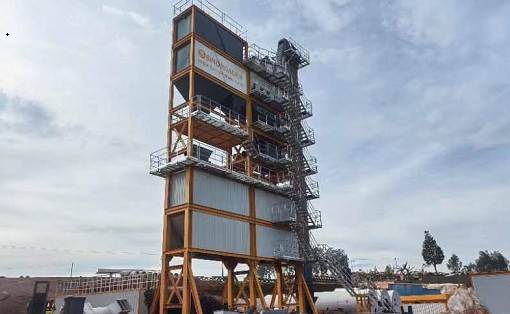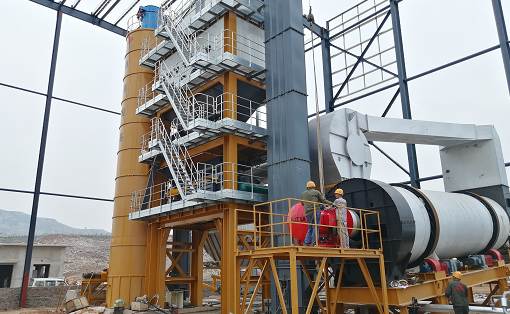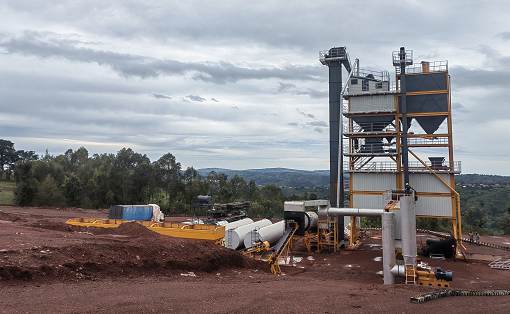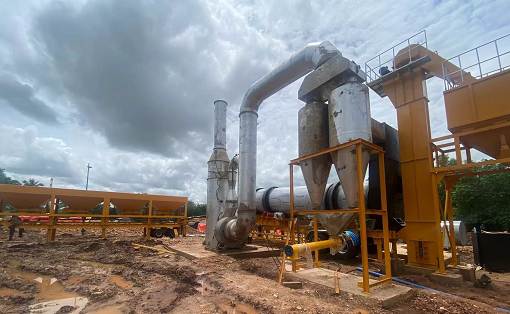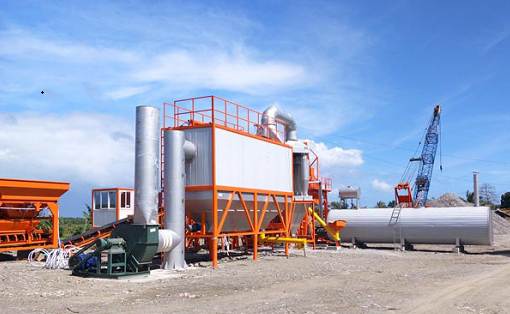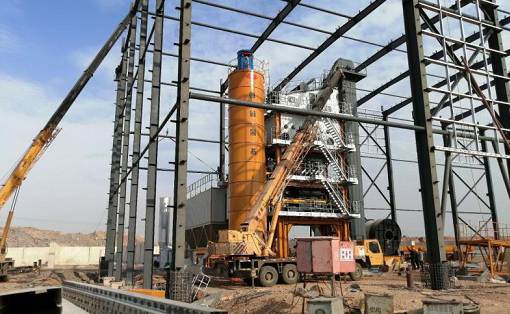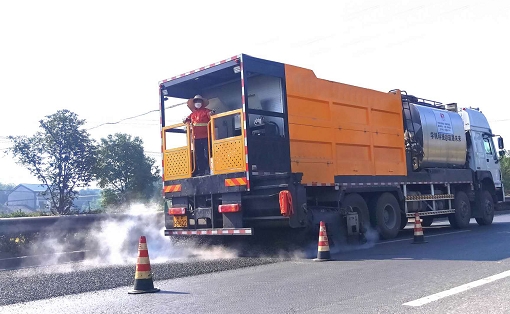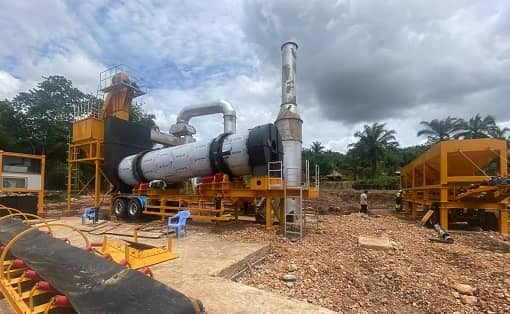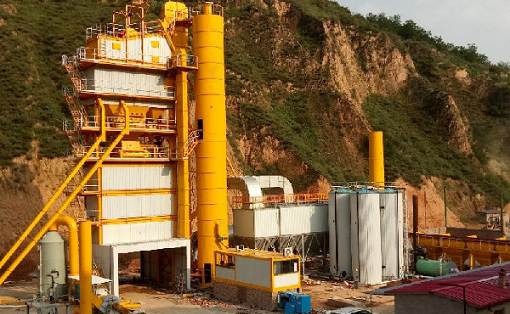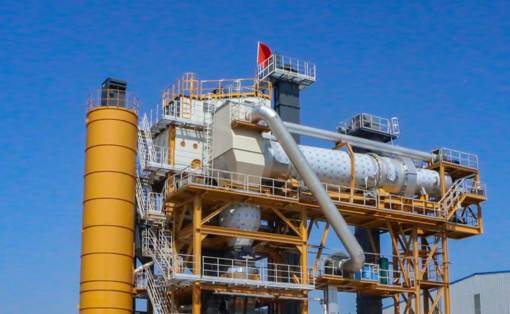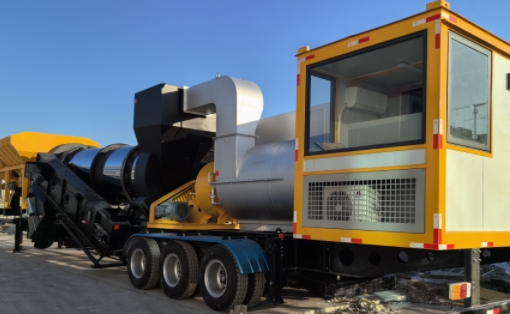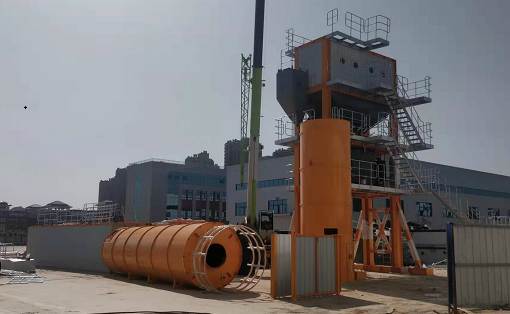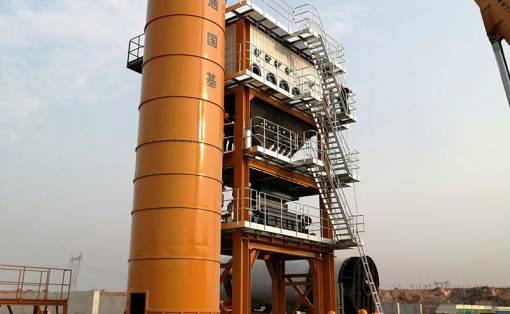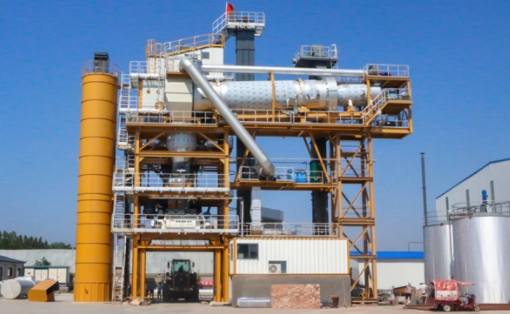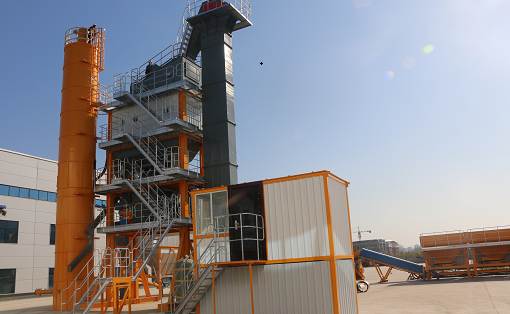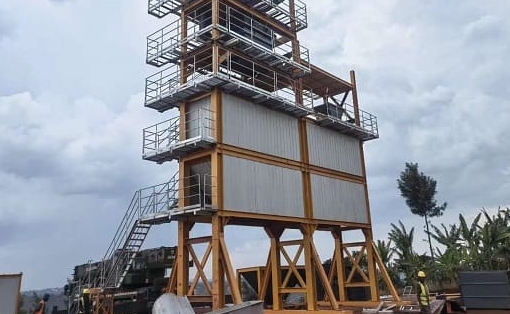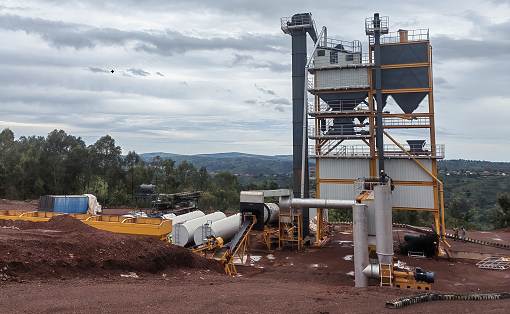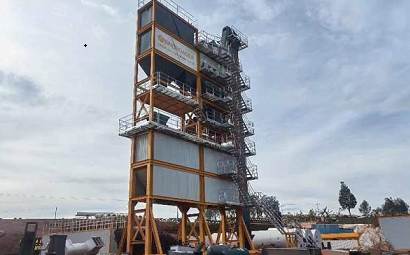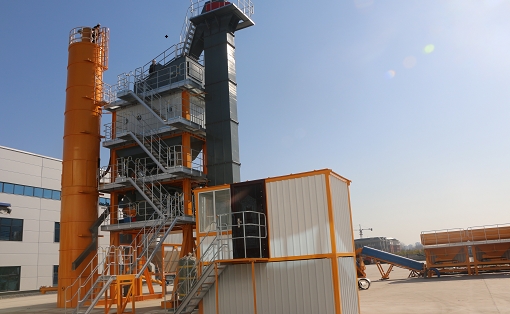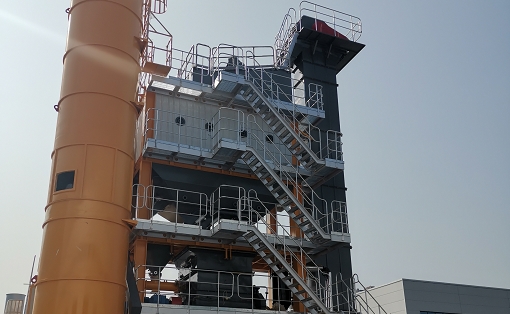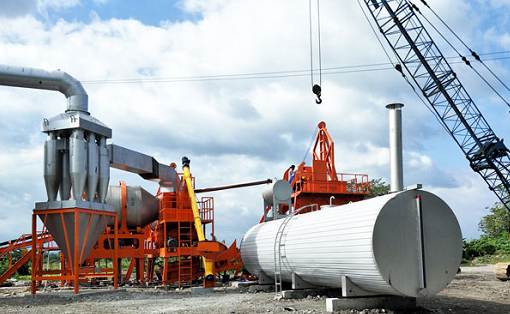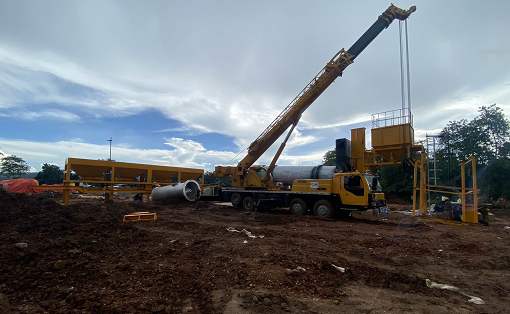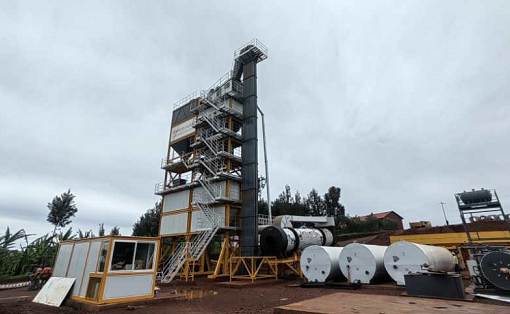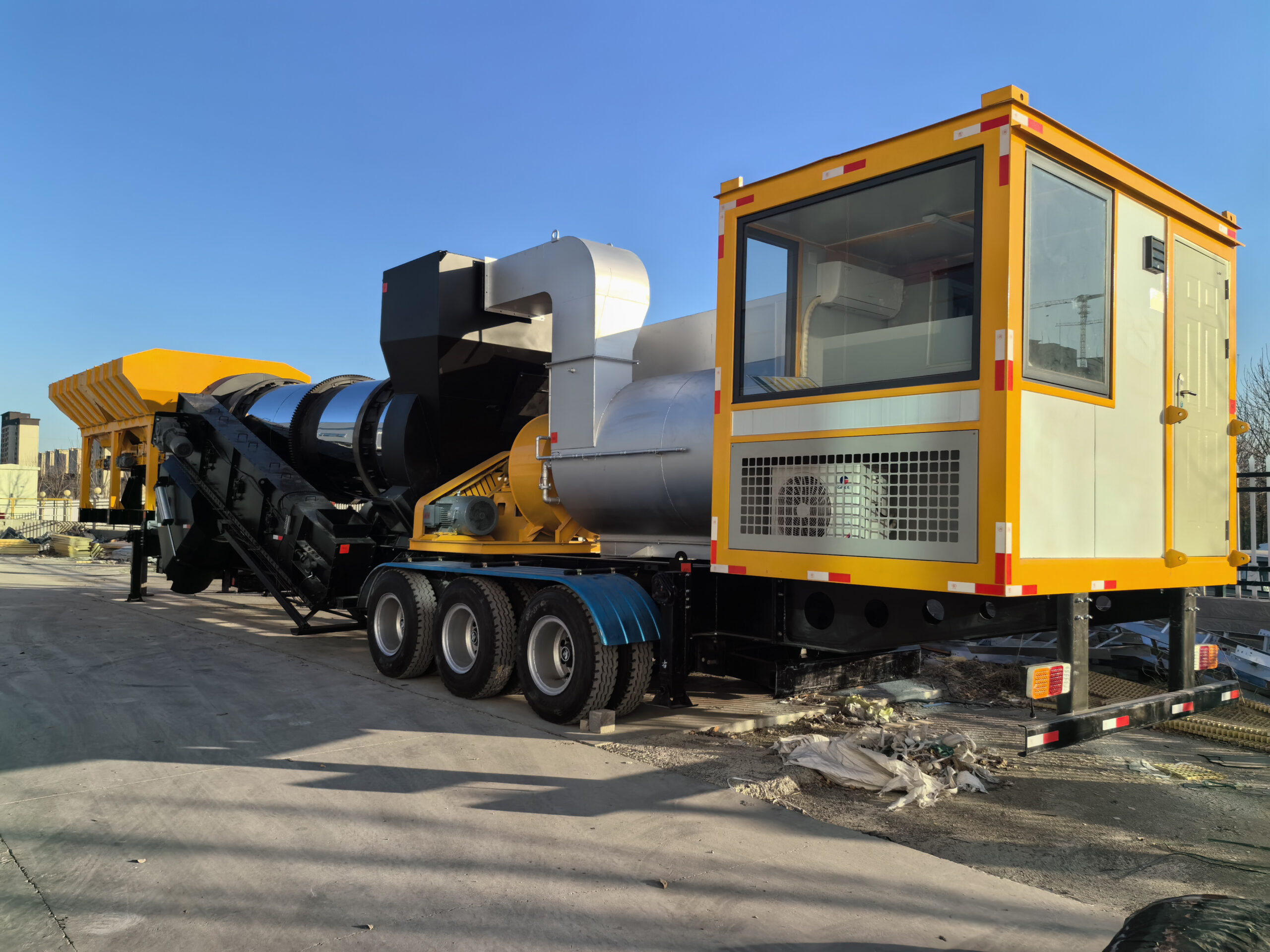How to make the mix ratio of asphalt mixing plants
In recent years, asphalt pavement has dominated highway surfaces. With the rapid development of our country’s national economy, highway traffic volume is increasing, axle loads are increasing rapidly, vehicle speeds are increasing, and there are more and more quality problems occurring on asphalt pavements. Some are damaged after repair, and some have a service life of up to Less than design age. This has put forward increasingly higher requirements for the quality of asphalt pavement, and an important factor affecting the performance of asphalt surface layers is the gradation composition of the mixture. This article discusses the mix design of asphalt mixture.
In recent years, asphalt pavement has dominated highway surfaces. With the rapid development of our country’s national economy, highway traffic volume is increasing, axle loads are increasing rapidly, vehicle speeds are increasing, and there are more and more quality problems occurring on asphalt pavements. Some are damaged after repair, and some have a service life of up to Less than design age. This has put forward increasingly higher requirements for the quality of asphalt pavement, and an important factor affecting the performance of asphalt surface layers is the gradation composition of the mixture. This article discusses the mix design of asphalt mixture.
1 Selection of grading type
Choosing the appropriate gradation type of asphalt mixture is the prerequisite for ensuring the quality of the asphalt concrete pavement surface. The design of asphalt concrete surface layer is generally based on the “Technical Specifications for Highway Asphalt Pavement Construction” (JTJ032-94) (hereinafter referred to as “Specifications”), “Highway Asphalt Pavement Design Specifications” (JTJ014-97) and “Highway Engineering Set Test Procedures” (JTJ058 —2000). my country’s current specifications stipulate that the particle size of the asphalt mixture in the upper layer should not exceed 1/2 of the layer thickness, and the aggregate particle size of the asphalt mixture in the middle layer should not exceed 2/3 of the layer thickness; the asphalt pavement structural layer mixture The nominal size of the aggregate should not exceed 1/3 of the layer thickness. For coarse mixtures, this ratio should be reduced. Based on this analysis, for an asphalt surface layer with a certain thickness, if the gradation type is selected according to the requirements of the “Technical Specifications for Highway Asphalt Pavement Construction”, the particle size of the asphalt mixture aggregates will generally be larger, not to mention that 0 to 5% of the particles exceed particle size, which will inevitably bring insurmountable construction difficulties to the construction of asphalt concrete pavement. For example, the screed of a paver can easily pull large-size aggregates, especially super-size aggregates that are 0 to 5% larger than the particle size. ; If fine materials are used to make up for it, it will easily destroy the gradation of the asphalt concrete mixture, making it difficult to control the compaction of the surface layer in local areas, or causing the asphalt concrete surface layer to have a large void ratio and serious water seepage. The asphalt pavement structure in Puyang City has been using a thickness combination model of 4cm + 3cm for many years. This combination model has great limitations in the selection of asphalt mixture types. The particle size of the lower layer of 4cm should generally not exceed 25mm, and the particle size of the upper layer of 3cm should generally not exceed 15mm. According to the situation of materials used in pavement in Puyang area in recent years, surveys, tests, analysis, and comparisons show that there is a wider choice for the lower layer. The AG-201 grading type is mostly used. The choice of the mix type for the upper layer is very difficult. For the 3cm thick upper layer, according to the “Technical Specifications for Asphalt Pavement Construction”, it is more appropriate to choose AC-10I type. The nominal particle size of AC-10I type is 13.2mm. The particle size is 15mm. This gives us great limitations in material selection. To achieve a reasonable selection of this mix ratio, we must check through two channels: one is to inspect as many aggregate resources as possible, and the other is to ensure that the vibrating screen of the mixer must be It must be specially customized according to the screen holes required by different gradation types.
2 Selection of raw materials
To ensure project quality, project materials must be strictly selected and inspected, which is also an indispensable and important link before asphalt mixture mix design. The selection and determination of raw materials should be based on the requirements of the design documents for the pavement structure and use quality, the relevant provisions of the “Specifications”, combined with the supply of floor materials, and inspections in accordance with the requirements of relevant test procedures, and then select the best materials to ensure that the materials have various properties. The technical indicators all meet the specified technical requirements.
2.1 Principles of material selection
The raw materials that make up asphalt concrete mainly include: coarse aggregates, fine aggregates, fillers (mineral powder), and cementing materials (asphalt) of different specifications. The selection of raw materials is based on the following principles: good technology (meeting technical index requirements), good economy, and local materials combined with environmental protection.
2.2 Selection of asphalt
Asphalt is one of the main components of asphalt concrete and the main factor that determines the quality of asphalt mixture. Therefore, when choosing asphalt, in addition to paying attention to the quality of the asphalt itself, you must also pay attention to the adaptability of the asphalt grade to the local environment, atmosphere, and temperature. It is necessary to take into account both the crack resistance in winter and the plastic deformation resistance in summer. ability. In recent years, Puyang City has chosen AH-90 to be widely used in road network reconstruction projects based on the local environment, climatic conditions and traffic conditions, which has played a great role in improving the quality of asphalt surfaces.
2.3 Selection of coarse aggregate
The function of coarse aggregate in asphalt concrete surface layer is to provide stability through the interlocking effect between particles and to resist displacement through its friction effect. Both its shape and surface texture affect the stability of asphalt concrete, so when choosing coarse aggregate, you must strictly follow the technical requirements of coarse aggregate. That is, the crushing value, polishing value, water absorption, adhesion, needle-shaped particle content, etc. all meet the requirements. Combined with the fact that most of the coarse aggregates used in this area are limestone, which has poor wear resistance but has very good adhesion to asphalt, making it an ideal material for building thin asphalt pavements. The main specifications are: 20~40mm, 10~20mm, 5~10mm, 3~6mm.
2.4 Selection of fine aggregate
Fine aggregate generally refers to natural sand, artificial sand, stone chips, etc., which increase the interlocking effect between particles in the asphalt mixture and reduce the pores between coarse aggregates, thus increasing the stability of the mixture. When selecting fine aggregates, in addition to the technical indicators that should meet the specifications, the grading situation, the bonding force with the asphalt, the wear resistance and the stability of the mixture should also be considered.
2.5 Selection of fillers
When selecting fillers, you must consider whether they can meet hydrophilicity and fineness requirements, and whether they can improve the bonding force between asphalt and aggregates. Different fillers are selected according to the properties of the aggregate. For alkaline aggregates, finely ground stone powder can be used as filler; for neutral materials, finely ground limestone powder can be used; in addition, cement hydrated lime, etc. can also be used according to different situations. As filler.
3 Asphalt mixture mix design
The “Specifications” stipulate that the three-stage mix design method should be used for the mix design of asphalt mixtures. The purpose of this method is to program and deepen the design, so that the design results are more consistent with production reality, so as to fully play the role of guiding construction.
3.1 Target mix design
According to the requirements of the structural layer of the design document, the corresponding qualified materials are selected, the mineral material grade ratio is calculated, and the state mix ratio is found. In general, the test matching results should be as close as possible to the middle value of the grading range. Referring to the recommendations of the “Specifications”, a range of asphalt content was fixed based on past experience, and 5 to 6 groups of specimens were configured with different asphalt-rock ratios at 0.5% intervals. Marshall stability, porosity, specimen density, flow value, asphalt asphalt were tested respectively. The amount of OAC should be used, and then the OAC parts should be made according to the amount of asphalt, and the water stability test and high temperature stability test should be done. According to the verification results, if the relevant regulations are not met, another material will be selected, the gradation will be adjusted, or other measures will be taken to redo the test until the requirements are met and a more ideal target mix ratio will be determined.
3.2 Production mix design
After the target mix ratio is determined, the production coordination design of the asphalt mixture mixing equipment used in actual construction must be carried out. Before the test, first select a vibrating screen of appropriate size according to the gradation type of the road structure. When choosing, follow:
(1) The sieve holes of the dynamic screen should discharge mineral materials with over-sized particles to ensure that the throughput of the particle size sieve holes is within the required gradation range;
(2) Vibration binning should keep the materials in each hot silo balanced to improve production efficiency;
(3) It should be noted that the aperture of the vibrating screen should correspond to the size of the indoor test square hole screen. During the test, the mineral materials were sampled from the cold material bin according to the designed target mix ratio and various index tests were carried out to ensure that the synthetic gradation was within the required range and roughly close to the median value. The mixture was mixed according to this ratio and the hot mix material was used. The Marshall test is carried out, and the whetstone ratio of this test is tested using the whetstone ratio determined by the target mix ratio ±0.3%. Determine the amount of oil according to the same test method as the target mix ratio, and the result is the production mix ratio. Based on this result, the quantity of mineral materials and the quantity of asphalt in each hot bin required for each plate of material are determined according to the mixing capacity of the mixing equipment.
3.3 Verification of production mix ratio
The verification of the production mix ratio is the verification of the expected results through actual construction. It is also an evaluation of the asphalt mixture mix design from a perceptual perspective. It is also an inspection of the construction plan formulated by the construction unit, including mixing, transportation, and paving during the inspection period. , the feasibility of the rolling process, etc. and the matching of the equipment. This can be judged from the color of the mixture, mixing uniformity, segregation, surface condition after rolling, etc. At the same time, testers can be organized to sample the mixture in time after mixing and paving, and conduct extraction such as Marshall test. Conduct various inspections such as drilling core sampling on the rolling section, monitor the entire production process, and check whether the material input of various equipment parameters is accurate. Sort out all the data at this stage and conduct comparative analysis. If any indicator does not meet the specification requirements, the production mix ratio or related processes should be adjusted until the design requirements are met. Based on this, a summary report is written and submitted to the supervisor and owner for approval and implementation.
4 The significance of third-order mix proportion design of asphalt mixture
The three-stage design of the asphalt mixture mix ratio has great guiding significance for construction, and it truly links indoor testing with construction and production. However, the following points should also be noted during actual construction:
(1) It is necessary to overcome the past practice of only using target mix ratios for mixture mix design, while ignoring production mix ratios and verification mix ratios; nor should we give up when some indicators are unqualified or there are difficulties in testing. Special attention should be paid to the strict control of the ratio of cold silos and hot silos during the production mix design stage; when the materials change, the mix ratio must be adjusted in a timely manner.
(2) When designing the mix ratio, specific problems must be analyzed in detail, and the provisions of the “Specifications” cannot be copied rigidly. Without departing from the “Specifications”, the proportion design can be flexibly carried out according to different materials.
(3) During the mix design process, it must be combined with the actual conditions of construction and production, and cannot be separated from the existing technical conditions of organic waste gas treatment; at the same time, construction management must be strict to ensure that the production of the mixture is always controlled in the designed state.

